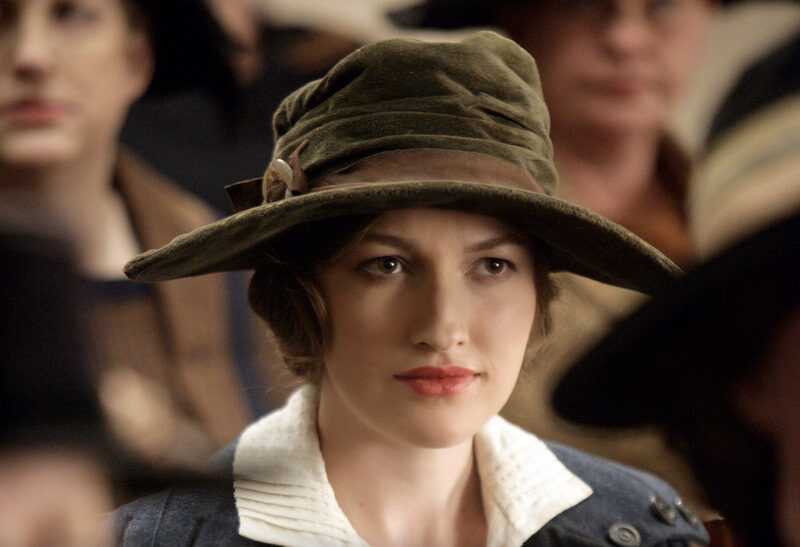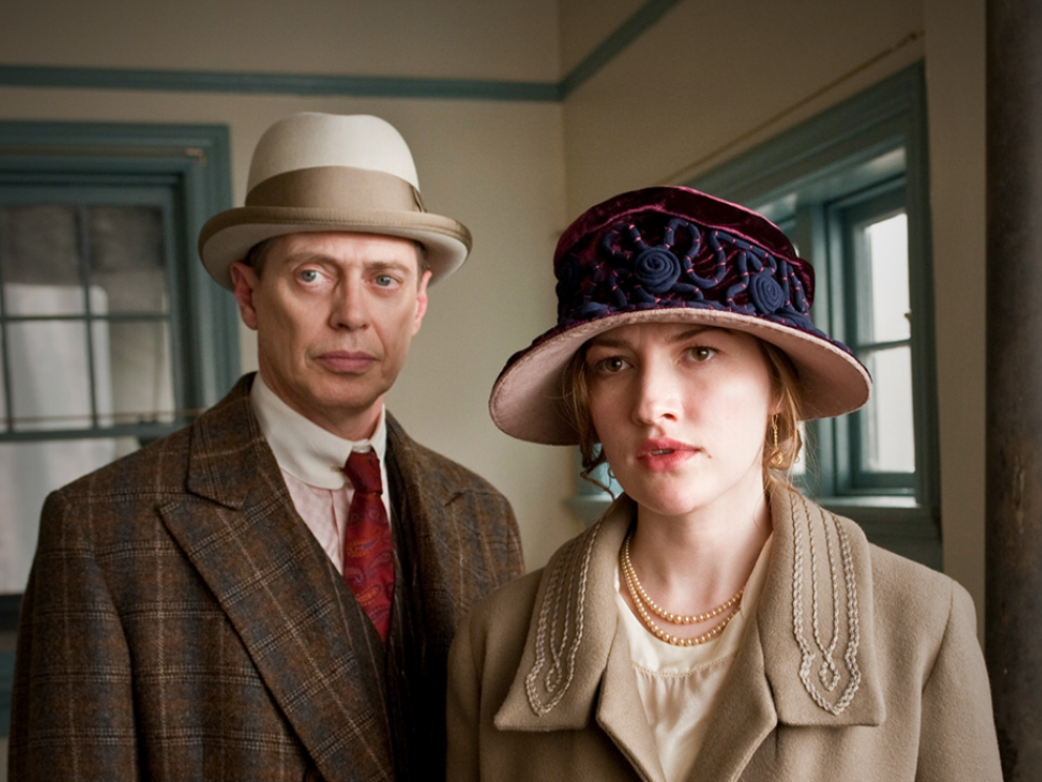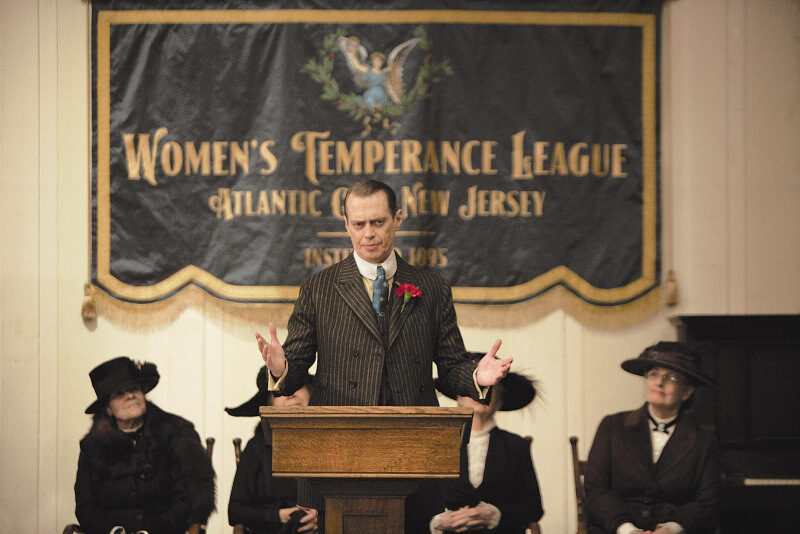Boardwalk Empire: Women of the Empire | Clothes on Film
© 2011, HBO 
9 Feb ’11 Filed under Clothes from 1920s, Girls on TV. Tagged Agent Nelson Van Alden, Atlantic City, Boardwalk Empire, Clothes from 1920s, crepe de Chine, dress, feminine, flapper, frock, hemline, hobble skirt, Irish immigrant, John A. Dunn, Kelly Macdonald, long skirt, Lucy Danziger, Margaret Schroeder, Michael Shannon, Nucky, Paul Poiret, Paz de la Huerta, puritan, ruched, sailor neckline, tea gown, Temperance League, The Ivory Tower, tunic, wide brim hat, Ziegfeld Follies. Bookmark the permalink. Post a comment. Leave a Trackback (URL).
Scrupulously period accurate TV drama Boardwalk Empire (screening on Sky Atlantic) is set in early 1920s Atlantic City, a then hotbed of political corruption and prohibition racketeering. Not that such a description would be alluded to in the holiday brochures; on the surface everything was salt water taffy and Temperance League matriarchs fighting the good fight.
Via John Dunn’s striking costumes, the show broadly ensures that men are the primary objects of exhibition, in particular corrupt county treasurer Nucky Thompson (Steve Buscemi). This is because women of the era had yet to break away from history’s designated roles of wife, mother, sex object; they had no freedom to choose their path.
Following implementation of the 19th Amendment in the U.S., individual states were no longer able to prohibit women from voting. As Boardwalk Empire gets underway the pilot episode sets a scene of a community on the verge of change, though perhaps not yet ready for it. The majority of women in the show are subservient to men. Their clothes reflect this, still very much centred on cohesion rather than individual display.
The principal female character in Boardwalk Empire, certainly at the start of the story, is Margaret Schroeder (Kelly Macdonald), a young immigrant mother; pregnant and beaten on a regular basis by her workshy husband in an attempt to strengthen his flaccid masculinity. From a costume point of view most enlightening about Margaret are her long, abundant skirts that rest just above the ankle. These may on first glance appear oppressive, yet are far less prohibiting than the infamous, narrowing ‘Hobble skirt’, reintroduced by Paul Poiret around 1910-15. Margaret’s clothes are humdrum, monotonous even, but wearable.
Shapeless was perhaps the watchword for women’s day clothes. ‘Tea gowns’ became popular, with the still revolutionary raised empire waistline. Layering beneath a wide, long sleeved coat or ‘frock’ was also commonplace. The skirt and accompanying tunic may have been relatively comfortable, as was the likely homemade shawl, but heavyweight crepe de Chine dresses with puritan and sailor necklines, plus copious braiding on cumbersome overcoats ensured women’s freedom was still literally as well as figuratively restricted.
Despite Margaret’s swift and – in early episodes at least – platonic involvement with Nucky, she is a complete contrast to the other woman in his life, i.e. ex-Ziegfeld Follies dancer and bedroom squeeze Lucy Danziger (Paz de la Huerta). Lucy is a pre-’flapper’, more luxuriously dressed than scandalous and still sporting cascading, feminine hair. Margaret hides most of her hair under a wide brim green felt hat with ruched crown (the colour obviously inferring her Irish origins, as does her Donegal tweed coat), though still wears it long and natural. In fact in the episode ‘The Ivory Tower’, Margaret’s hair, or more specifically the bow she ties it with, comes into play within the narrative; it forms the basis of repressed Agent Nelson Van Alden’s (Michael Shannon) self destructive obsession.
For those coming to Boardwalk Empire fresh it is the sombre face of the Women’s Temperance League that will form your first view of female characters in the show. Note how the camera takes in the audience for Nucky’s keynote speech in the pilot episode; young and old both look the same. And then contrast with the showgirls and molls at Nucky’s club. The raised hemline, flattened chest flapper revolution was gently underway.
Styles may have still trickled down from Paris, but thanks to prohibition speakeasies and jazz clubs, the impending fashion scandal would be America’s own.
© 2011, Chris Laverty.
Related Posts:


